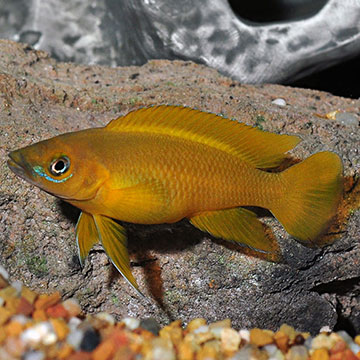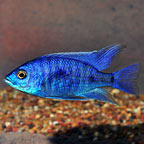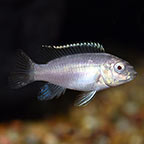
Additional locales and sizes may be available!
Additional locales and sizes may be available! Email me when availableQuick Stats
What do these Quick Stats mean? Click here for more information
What do these Quick Stats mean? Click here for more information
Overview
The Orange Neolamprologus Leleupi Cichlid should be maintained in an aquarium of at least 30 gallons with other smaller Tanganyikan cichlids. Incorporate plenty of rocks, shells and African driftwood in order to build caves. Provide a sandy bottom of white aragonite to maintain the necessary high pH and alkalinity, and to maintain their bright coloration. Darker substrates will cause these fish to darken.
The Orange Neolamprologus Leleupi Cichlid is a secretive cave spawner, and breeding is more difficult than most of the cichlids. This is a very slow growing species which may take a few years to reach sexual maturity. At that time, the males are typically larger than the females, attaining a size of about 4" compared to 3" with females. Provide a number of caves for the pair to choose from. Once an acceptable site is found, the female will lay her eggs within the cave, and the male will fertilize them. Incubation occurs in 3 to 4 days. They are typically very good parents until they spawn again. To increase their survival rates, relocate the young to a separate aquarium once breeding activities between the parents are noticed. Feed the fry newly hatched brine shrimp and finely crushed flake food.
Their diet should contain Spirulina flake or pellet food along with meaty items such as blood worms and mysis shrimp.
Approximate Purchase Size: Small: 3/4" to 1-1/4"; Medium: 1-1/4" to 2-1/2"








